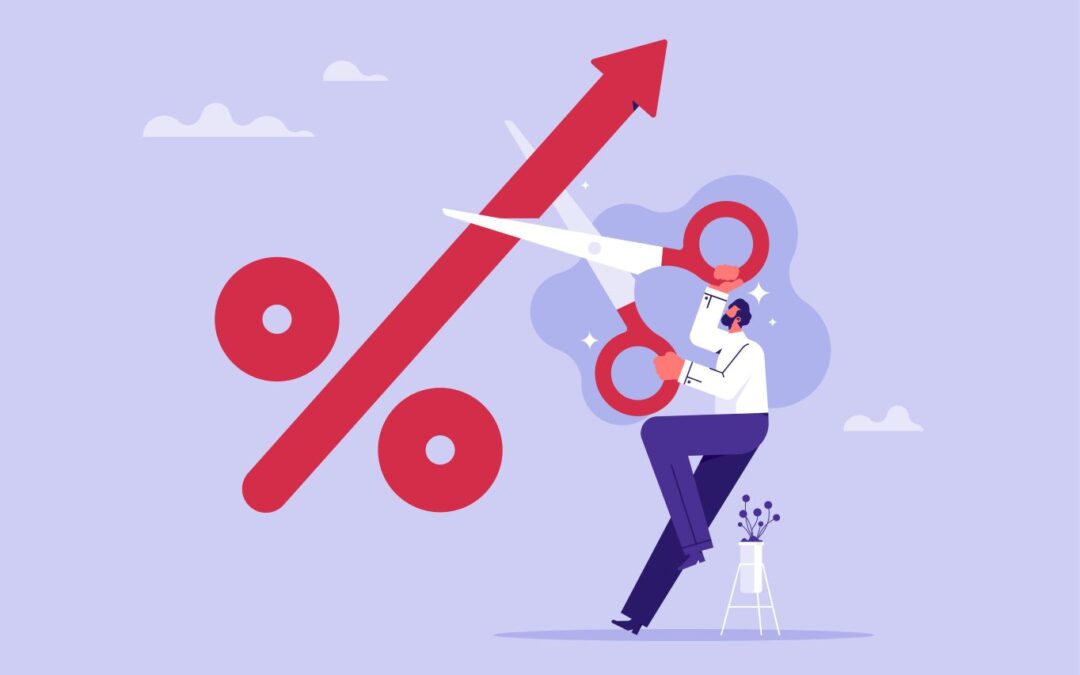Most Australian economists plus money and bond market traders expect the RBA will cut the cash rate by 25bps to 4.10% at the interest rate setting meeting on 17th/18th February. We are more cautious and see a rate cut as possible but by no means certain. The case for cutting the cash rate rests entirely on the latest relatively low Q4 CPI result as a harbinger of more low CPI results to come. The case against a rate cut, however, still seems strong with demand in the economy rising, output growth stagnant and a continuing tight labour market all meaning that inflation could stop slowing and rekindle later this year.
The low CPI case for a rate cut can point to progress reducing inflation. The quarter-on-quarter change in the CPI was only 0.2% repeating an identical 0.2% change in Q3 2024. Because of those low quarterly CPI changes in the second half of 2024, annual CPI inflation fell from 3.8% y-o-y in Q2 2024 to 2.4% y-o-y in Q4 2024 just below the middle of the RBA’s 2-3% target band. Moreover, the decline in the annual CPI inflation rate is likely to continue in the immediate term. When the Q1 2025 CPI is released in late April, the quarter-on-quarter change is likely to be lower than the 1.0% result from Q1 2024 and that will the annual CPI result down to around 2.0% y-o-y. The reduction in annual CPI inflation does not stop there. The quarter-on-quarter CPI was 1.0% in Q2 2024 as well and a lower than 1.0% in Q2 2025 will take annual inflation briefly below 2.0% y-o-y.
With annual CPI inflation clattering down below the bottom of the RBA’s 2-3% target range by the time the Q2 CPI is released in late July, surely that provides a strong case to start cutting the cash rate this month?
The answer is still only possibly. Some of the factors driving down annual inflation such electricity rebates, greater government subsidies for childcare and medical are cutting the annual CPI inflation rate by more than one percentage point through the current financial year. Even if the rebates and subsidies are retained at their 2024-25 levels in 2025-26 that boosts the annual CPI inflation rate around a percentage point. If some are not retained, a likelihood for the electricity rebates, the annual CPI is boosted by more than a percentage point through 2025-26.
The Federal and State Governments various and very costly cost-of-living measures have reduced CPI inflation more than would have occurred otherwise, but a rebound in annual inflation is likely, starting in Q3 this year when a much higher than the 0.2% quarter-on-quarter change that was registered in Q3 2024 will occur. Annual CPI inflation will lift sharply in Q3 and Q4 this year and could rise well above 3.0% y-o-y on this base effect alone.
Other factors that may still be concerning the RBA in the Q4 CPI reading are that while underlying annual inflation measures have fallen, they are still sitting above 3.0% (3.2% y-o-y for the trimmed mean and 3.4% y-o-y for the weighted median). Also, while service price inflation has also fallen, it was still above 4% y-o-y in Q4 at 4.3%.
Then there are those factors mentioned earlier that could rekindle inflation. Domestic spending is rising with real government spending galloping along at a 4% annual clip in real terms and showing no signs of slowing. Private sector spending was weak through the first half of 2024 but started to lift in the second half. The pattern of retail spending growth through 2024 shows a clear improvement.
Quarter-on-quarter real retail sales fell by 0.3% in Q1 2024 and fell another 0.2% in Q2 before rising 0.5% in Q3 and 1.0% in Q4. As a result, annual growth in real retail sales changed from falling 1.1% y-o-y in Q1 2024 to rising 1.1% y-o-y in Q4. Annual growth in broader household spending was even stronger in Q4, up 1.4% y-o-y.
Private sector spending is lifting and joining the exceptionally strong growth in public sector spending and at a time when there is no growth in productivity. Even though labour is in short supply and becoming more expensive, the way in which output is lifting to service growing demand is by putting on more labour. That is why labour market conditions remain very tight, and the unemployment rate is refusing to lift to 4.3% to 4.5% territory that the RBA considers is consistent with inflation keeping down to 2-3%.
This is the output gap that RBA Governor Michelle Bulloch has regularly referred to. The gap between growth in demand and output was closing through much of 2024, but there is evidence that it may be edging wider again and that in turn means that whatever progress is reducing inflation so far and in the immediate future, that progress may whittle away and start to reverse.
In a quirk of timing, the RBA meeting over the 17th and 18th February precedes key data reports relating to the tightness of the labour market. The Q4 wage price index will be released on the 19th and the January labour force report on the 20th. Those reports most likely will show annual wage growth running faster than 3.4% y-o-y in the RBA’s most recent (November 2024) economic forecasts and the 4.3% unemployment rate in the November RBA forecasts for around this period set substantially too high. Just another impediment to a rate cut.
Whether the RBA decides to cut or not at the approaching meeting, what is clear is that the RBA has limited leeway to cut the cash rate by much this year and may need to turn next year towards considering rate hikes if the output gap fails to close or widens, as seems more likely.

